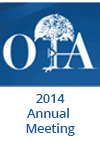
OTA 2014: Negative-pressure wound therapy not favourable to gauze dressing for ORIF

OTA 2014: Negative-pressure wound therapy not favourable to gauze dressing for ORIF
Role of Acute Negative-Pressure Wound Therapy Over Primarily Closed Surgical Incisions in Hip, Pelvis, and Acetabular Fracture Surgery: A Prospective Randomized Trial
Did you know you're eligible to earn 0.5 CME credits for reading this report? Click Here
CONFERENCE ACE REPORTS
This ACE Report is a summary of a conference presentation or abstract. The information provided has limited the ability to provide an accurate assessment of the risk of bias or the overall quality. Please interpret the results with caution as trials may be in progress and select results may have been presented.
Synopsis
151 patients who underwent open reduction and internal fixation (ORIF) for a hip, pelvis, or acetabular fracture were randomly assigned to receive negative-pressure wound therapy (NPWT) or standard gauze dressing over the closed incisions. Postoperative surgical wound drainage, risk of infections, and hospital duration were assessed. Findings revealed that, contrary to previously published literat...
To view the full content, login to your account,
or start your 30-day FREE Trial today.
FREE TRIAL
LOGIN
Forgot Password?
Explore some of our unlocked ACE Reports below!

Learn about our AI Driven
High Impact Search Feature
Our AI driven High Impact metric calculates the impact an article will have by considering both the publishing journal and the content of the article itself. Built using the latest advances in natural language processing, OE High Impact predicts an article’s future number of citations better than impact factor alone.
Continue



 LOGIN
LOGIN

Join the Conversation
Please Login or Join to leave comments.